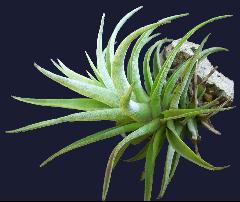
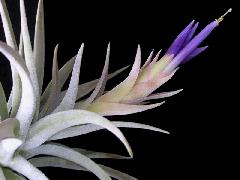
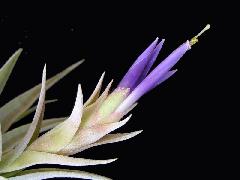
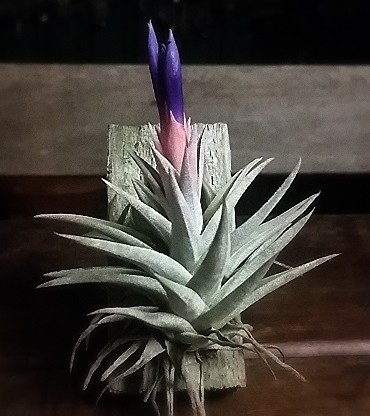
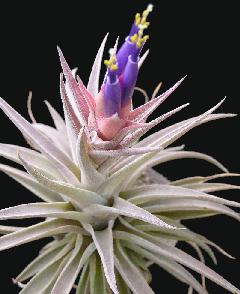
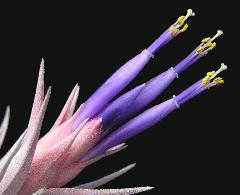
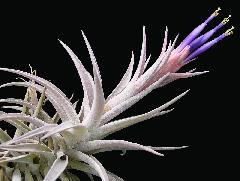
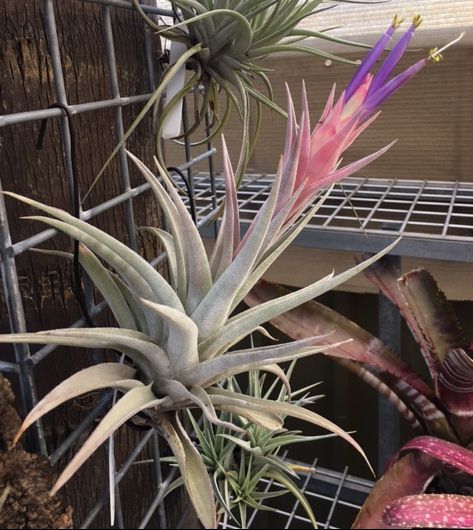
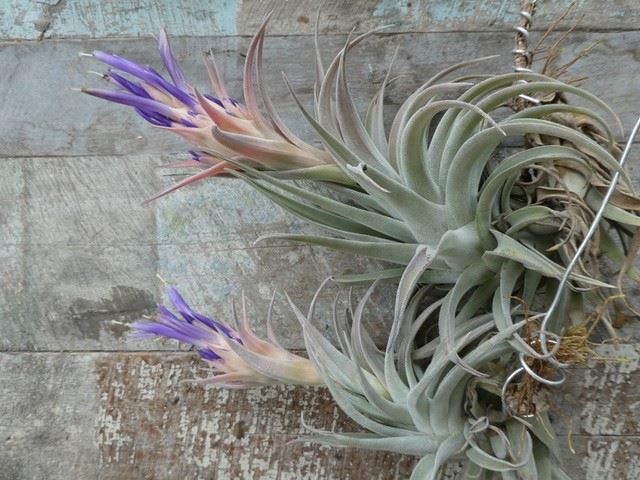
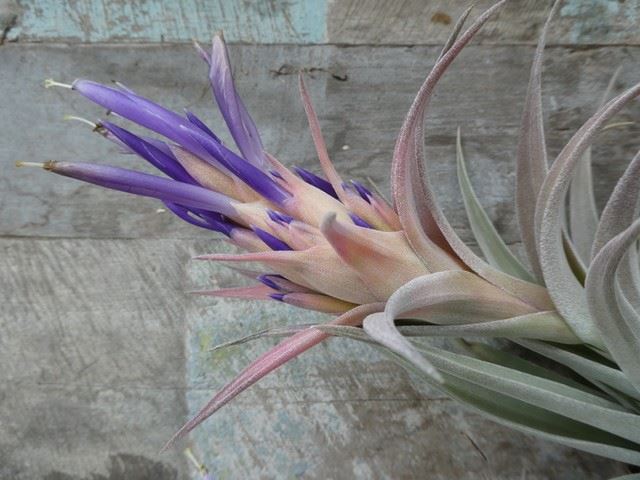
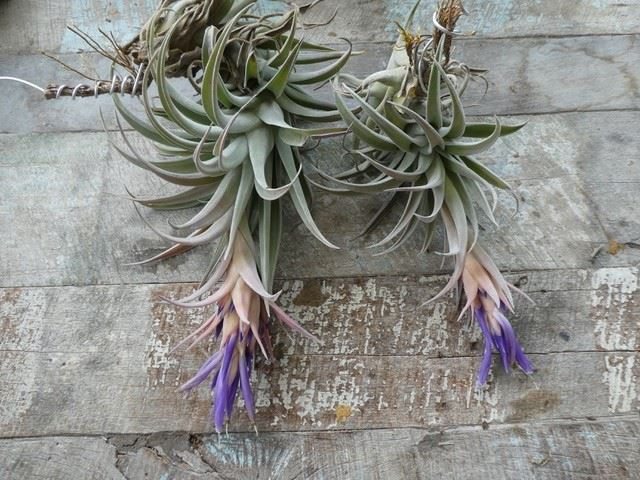
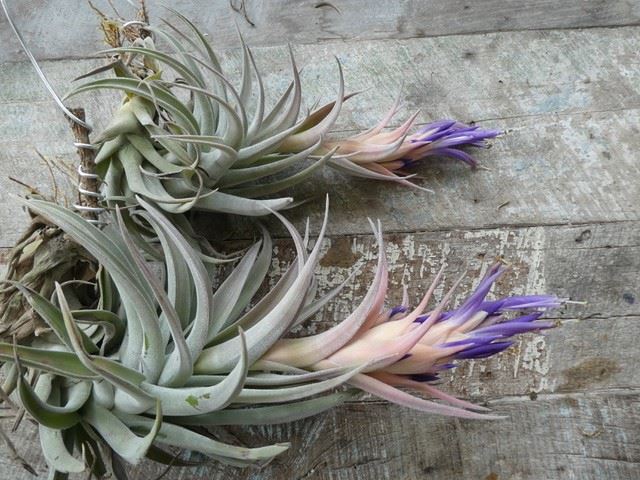
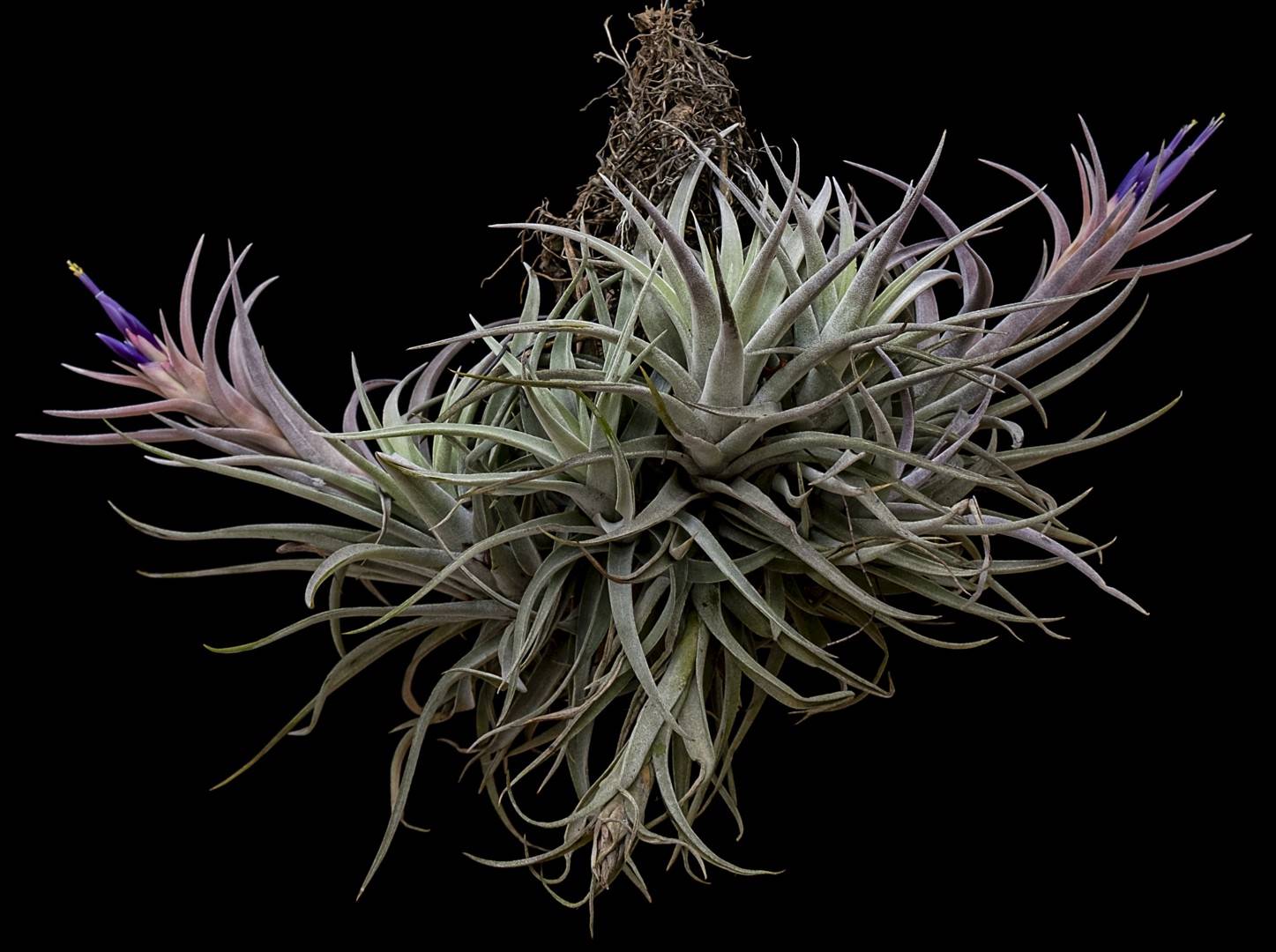
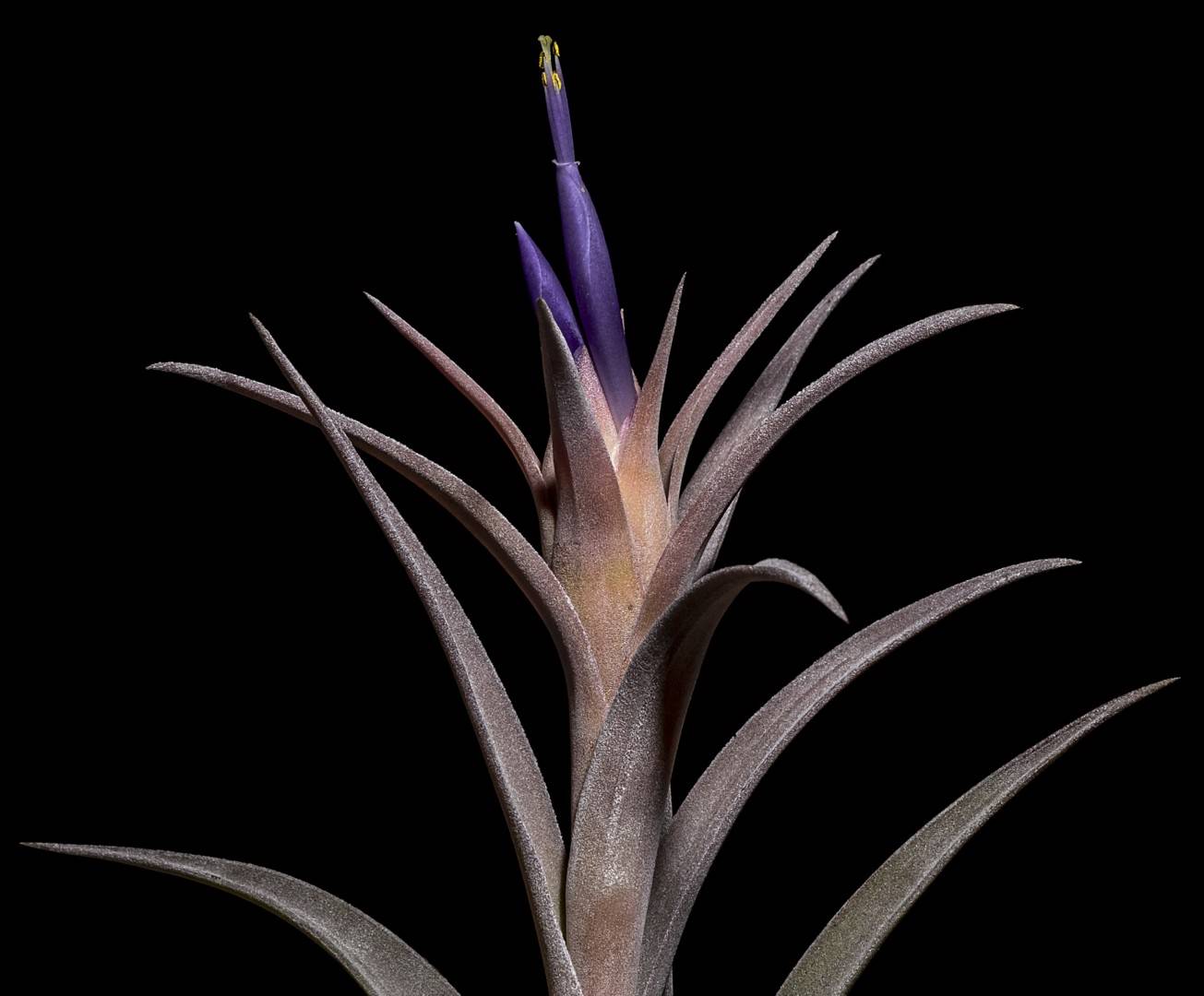
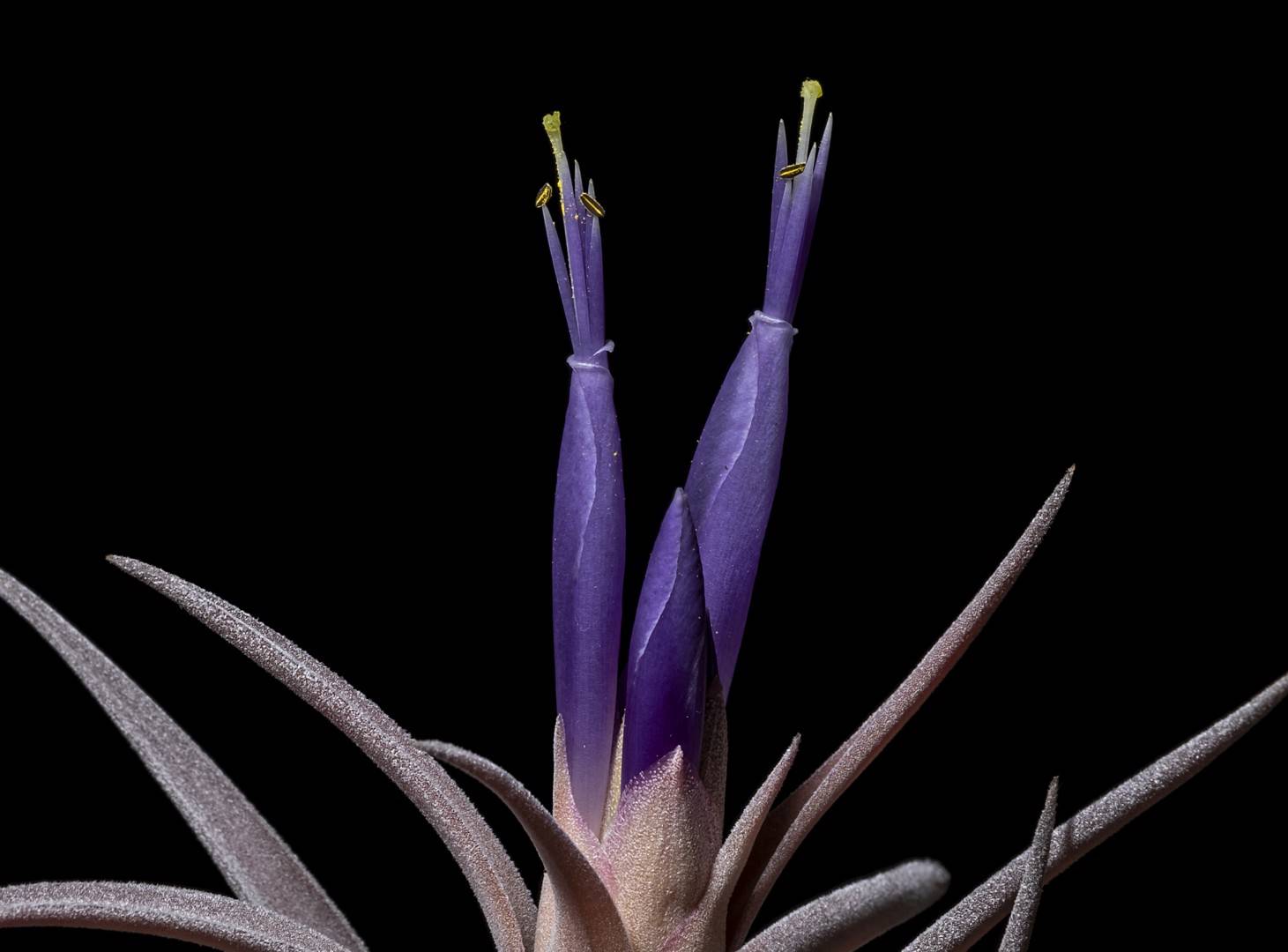
Plant with short stems, in groups of clusters; leaves numerous, forming a dense rosette of about 15 cm in diameter and 10-15 cm height;
Leaf-sheaths inconspicuous, pale;
Blades narrow-triangular, tapering into a long tip, 9-10 cm long, 2 cm wide at the base, involute and densely lepidote on both sides;
Scape short, 6-7 cm long, covered with subfoliate scape bracts., these mostly longer than the floral bracts;
Inflorescence simple, ca. 4 cm long, 2 cm thick, suhglobose, with 4-5 spirostichous arranged flowers;
Floral bracts erect, 4-5 cm long, 2.2 cm wide, broad-ovate, acute, ecarinate, green with rose tips, densely lepidote on both sides, exceeding the sepals;
Sepals 2.5 cm long, 1.1 cm wide, the posterior inconspicuous carinate and on 2 mm high connate; often sparsely lepidote;
Flowers up to 6.5 cm long;
Petals obtuse, violet, whitish to the base;
Stamens and style exserted.
Holotype RAUH 44149 (July 1975) in Herbarium of the Institute of Systematic Botany (Heid.)
Distribution: Honduras: Steep rock-walls in Pine-forest, Valle de Angel, 1800 m. Known from the type locality only.
Without flowers T. hondurensis resembles T. edithae RAUH from Bolivia and also T. nana BAKER from Peru and Bolivia, but, when flowering, it differs from both. In nature the leaves of T. hondurensis are very soft and fragile; they become harder in cultivation. The Tillandsia-key of L.B. SMITH in "Tillandsioideae" (1977) leads to the Mexican T. benthamiana KLOTSCH ex. BAKER, which has pendulous inflorescences and green flowers, but there exist no affinities to the latter . All in all, T. hondurensis is a very attractive new species, worthy of cultivation.
Notes
On our trip to Honduras in 1975 we collected, together with E. G. Kamm, a plant dealer in Valle de Angel (near the capital Tequcicalpa), in steep rock-walls in the midst of a pine forest at an altitude of 1800 m a new dwarf Tillandsia. It had been sold by Mr. Kamm for some time under the name T. hondurensis nom. nud., but a description was missing up to today, because we knew only dried inflorescences. Now, the plant has flowered in the collection of the Botanical Garden, Heidelberg, so that we are able to give a description.
translated by Derek Butcher
Monitoring of the Critically Threatened Epiphyte Tillandsia hondurensis, by P.R.House,
Director of the Herbarium (TEFH) School of Biology UNAH August 2008
Tillandsia hondurensis, is an epilithic species, with an extremely restricted distribution. One we are aware of, in the wild state is at a single place near the capital City in the municipality of Valle de Angeles that consists of a cliff of about 50 m high and 300 m long. The place is at 1400 m and the forest is within the Bosque de Pino Montano. The species is threatened by fire, collections, and climbers.
The University of Zamorano (EAP) and the School of Biology of the Universidad Nacional Autonoma de Honduras (UNAH) arranged a monitoring trip to the area on August 7 2008. The access route is along the high part of the cliff. The walk of 3 km from the highway, showed that the Bosque de Pino was being divided up for possible urban development for deluxe houses.
This activity has meant burning to clear the area. These burns have extended to the cliff, eliminating the possibility of finding Tillandsia hondurensis on the stones at the bottom of the cliff. It was possible to collect 5 specimens of Tillandsia hondurensis above 10 m on the rocks.
Tillandsia hondurensis is not the only epilithic Tillandsia here because a variety of Tillandsia fasciculata is common.
The total population of Tillandsia hondurensis may be in the hundreds of individuals. But the urban development of the place is a serious threat, by not taking into account the importance in the conservation of this species. It is recommended that this area is declared as an Important Site for Conservation, by the ICF, as soon as possible. This cliff also has a population of the endemic tree Symplocos molinae and several examples of Sobralia macrantha that grow to 20cm high.